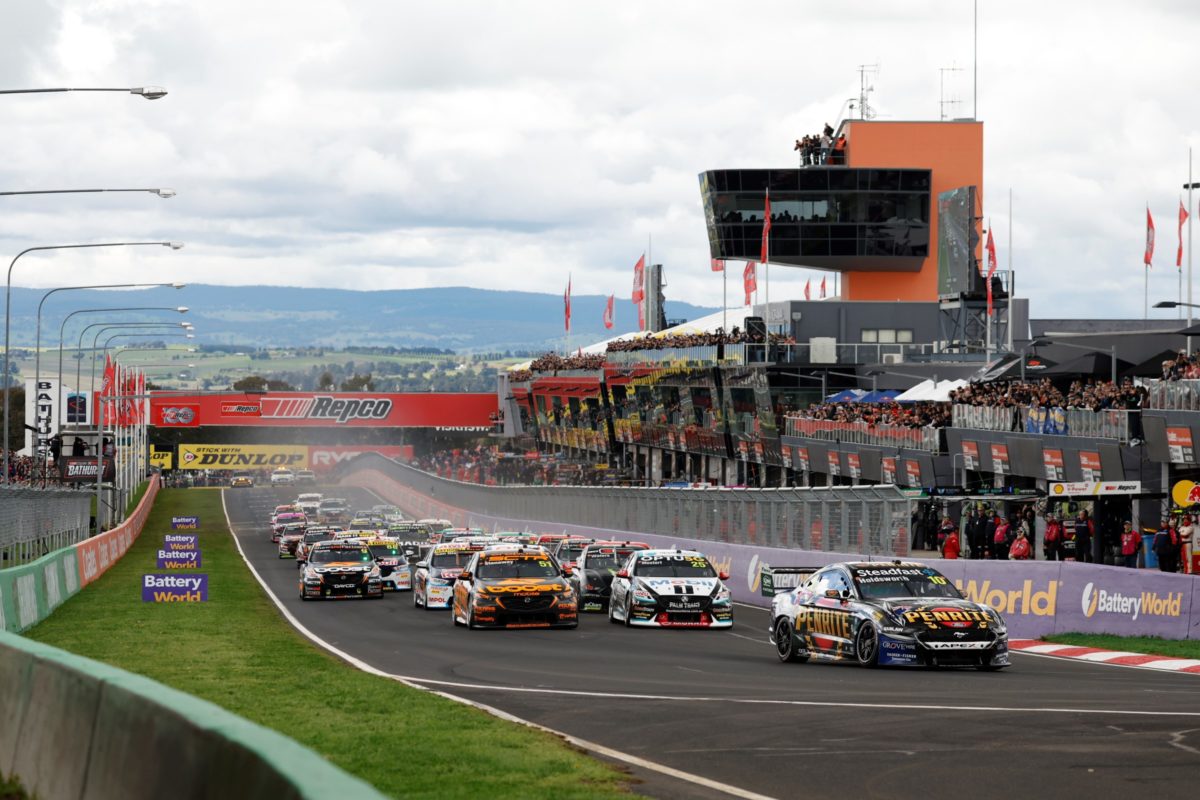

With the dust still settling on a chaotic Repco Bathurst 1000, we ask if there should be a rule change around co-drivers, in this week’s Pirtek Poll.
The first 57 laps of the Great Race saw six Safety Car periods generated, four of which can arguably be blamed on co-drivers and two directly on primary drivers, with just two more generated in the latter 104 laps.
Shortly after taking the chequered flag, race winner Shane van Gisbergen declared in a television interview that the early chaos “was all the co-drivers and all the people who caused it were co-drivers with something to prove; pretty simple.”
While that assertion might be somewhat harsh, or something of an exaggeration, it is certainly true that the worst carnage was caused by a co-driver, Zane Goddard, when he rejoined unsafely on Lap 5 after a bungled overtake at The Chase, and co-drivers were in all of the cars at the centre of the wild Lap 1 incident on Mountain Straight.
It is also true, however, that conditions were at their most challenging in the opening stages of the race, for which co-drivers tend to be put in cars for reasons of strategy.
Team owner Brad Jones, a runner-up in the Great Race as a driver, saw his lead car wiped out by Goddard.
He pointed out that this year’s Bathurst 1000 was an “unusual” one, but suggested it may be worth implementing a rule whereby primary drivers are forced to start in exceptional circumstances.
John Bowe, who shared a Mount Panorama podium with Jones and won the Bathurst 1000 twice with Dick Johnson Racing, went so far as to opine that only primary drivers should be allowed to start the race regardless.
Fellow two-time Great Race winner Russell Ingall, in a long and stern defence of Goddard on social media, nevertheless raised the question as to whether or not teams should be allowed to pair full-time drivers again, as well as suggesting the same solution as Jones did.
Another idea put to Speedcafe.com is that teams should be compelled to start the driver who qualified the car.
While, essentially, that would have the same effect as banning co-drivers from starting, Jamie Whincup did qualify the #88 Triple Eight Race Engineering entry despite Broc Feeney being the primary driver, although he effectively reverted to co-driver duties come race day, when he was behind the wheel for lights out.
It would, however, appear to be a neat solution which generally forces teams to put their best driver in for the start, regardless of who the official co-driver is.
Of course, that assumes that only one driver is in the car during Qualifying, which is not necessarily a given. Teams might thus be inclined to run both drivers through the car during that Friday afternoon session, although perhaps any loopholes could be closed by mandating that the driver who sets the qualifying time must start.
In essence, there are five options:
- Full-time drivers allowed to pair up again
- Primary drivers must start all the time
- Primary drivers must start in exceptional circumstances
- Qualifying driver must start
- No change to current regulations
The inescapable fact is that, for as long as the Bathurst 1000 is a two-driver race (and there is no suggestion that could or should change anytime soon), the field will be diluted.
That raises the question then as to why there needs to be a designated co-driver, who is not racing full-time in the Repco Supercars Championship, in each car.
The stipulation that full-timers cannot pair up exists only due to an argument that it enhances the entertainment proposition, by keeping more cars in contention and by making it more difficult for teams with two of the very best drivers in the championship to dominate the race.
That is, however, quite clearly a quantity over quality argument, and even the quantity argument is questionable considering the co-driver market.
Is Triple Eight, for example, really worse off relative to its rivals given it was able to snap up Garth Tander’s services when he was forced into premature retirement from full-time driving, and can also call on the team boss who so happens to be a four-time Great Race winner and seven-time Supercars champion?
This year’s Bathurst 1000-winning team might have done the same anyway, considering Tander’s performance and the fact that it sought to put Whincup in the car for Qualifying, but would other outfits potentially be better off if they could put their main drivers in the same car? Are there really 25 competitive (enough) co-drivers to call upon in the world?
The merit of guaranteeing that a driver who does not normally participate in the championship will win the biggest race on the calendar by far is also questionable.
Furthermore, while ever Bathurst is part of the championship, title contenders are also forced to put their faith in drivers who are not necessarily as safe a pair of hands as their team-mate might be.
However, if there is no desire to revert to the regulations as they were in 2009, then does some other solution need to be found?
Forcing primary drivers to start would make clumsy incidents in a packed field less likely, and would mean that the big names are in the cars for one of the most-watched moments of the event.
The qualifying driver-starting driver idea also has merit as it incentivises teams to put their best driver in for the start, regardless of their designation as a primary driver or co-driver.
The ‘exceptional circumstances’ provision raises the question of what and how ‘exceptional’ would be determined, although the official declaration of a wet track would be one obvious possible trigger.
Or, maybe you just think that 2022 was ‘one of those things’ which is part of the colour of motorsport.
So, how should Supercars’ driving rules for the Bathurst 1000 look going forward? Cast your vote below in this week’s Pirtek Poll.




















Discussion about this post